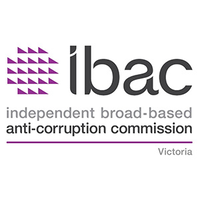What is Corruption?

Misconduct in Public Office
Corruption – Such A Dirty Word
An allegation of “corruption” has the power to shock and offend. This is probably because it is most frequently associated with bribery and similar forms of monetary gain. Corruption of this type is relatively easy to identify, particularly if there is a money trail that can be followed through the hands of those tainted by it. However, corruption can be deceptively subtle, and can take various forms.
Public Service Corruption
Public service corruption refers to any type of unlawful or unethical behaviour by public officials or employees in the government of Victoria, Australia. In particular, the following definitions may be helpful:
- “Corrupt conduct” is defined under the Independent Broad-based Anti-corruption Commission Act 2011 (IBAC Act) as conduct that adversely affects the honest performance of public functions by a public officer or public body, or which could reasonably be expected to do so.
- “Misconduct” is defined under the Public Administration Act 2004 as conduct by a public officer that falls below the standard of integrity and professionalism expected of them, and which could lead to disciplinary action.
- “Abuse of power” refers to the use of one’s position or authority to obtain a benefit for oneself or another person, or to cause harm to others. A succinct definition appears on the website ClearIAS: “Abuse of power occurs when a public employee uses their position of trust to improperly benefit another public employee, individual, or group. Additionally, it may involve a public employee discriminating against other public employees, people, or entities by abusing his or her positional authority.“
- “Bribery” is the offering, giving, receiving, or soliciting of any item of value in exchange for a favour or influence in the performance of official duties.
- “Fraud” refers to any intentional deception or misrepresentation that results in a financial or other benefit to oneself or others.
- “Conflict of interest” refers to situations where a public official’s personal interests or obligations conflict with their official duties, resulting in a risk of bias or unfair treatment.
It is important to note that these definitions are not exhaustive and may overlap with each other in certain circumstances. In Victoria, these types of corruption are yet to be taken seriously by IBAC, Victoria Police, and other relevant authorities.
Misconduct in Public Office
There is a more subtle form of corruption that is difficult for anyone but its victims to detect, which is easy to cover up, and which can cause irreparable and ongoing harm. It has the effect of eroding public confidence in important institutions. Indeed, the more trust the public have in an institution, the more damage this form of corruption can do. Worse still, the more the public trust the tainted institution, the less likely they are to believe it to be affected by corruption. This, in turn, creates evidentiary difficulties. Whistle-blowers are reluctant to come forward through fear that they will not be believed, or that their career paths will be severely limited. Ignoring the problem, or assisting in covering it up is often the first reaction when this type of corruption is discovered.
This form of corruption is known as Misconduct in Public Office (MIPO). Tell a person that their conduct amounts to MIPO, and they’re likely to dismiss the allegation with a rolling of eyes and a flourish of the hand. But tell them that their conduct amounts to corruption they will either run for cover or attack with all guns blazing.
In the past MIPO was largely ignored, but in recent times it has become recognised as one of the more dangerous and harmful forms of corruption. It is now clearly specified in the formal definition of corruption.
Formal Definition – IBAC
The formal definition MIPO can be found at Section 4(1) of the Independent Broad-based Anti-corruption Action 2011 (Vic) (the IBAC Act) and includes conduct that would constitute a relevant offence, which is defined at Section 3 of the IBAC Act:
“relevant offence” means—
(a) an indictable offence against an Act; or
(b) any of the following common law offences committed in Victoria—
(i) attempt to pervert the course of justice;
(ii) bribery of a public official;
(iii) perverting the course of justice;
(iv) misconduct in public office;
A simple statement of this definition can be found on the IBAC website. (CLICK HERE here to visit the IBAC definition of corruption.)
Judicial System Corruption
There is a dilemma when it comes to identifying judicial corruption. On the one hand it is necessary to protect the independence that judges need in order to do their work, but on the other hand the favouring of one party over another for reasons personal to the judge (such as seeking approval of peers or enhancing prospects for advancement within or beyond judicial office) is extremely damaging to the judiciary.
As Siri Gloppen points out at Chapter 5 Courts, Corruption and Judicial Independence in “Corruption, grabbing and development: Real world challenges”
“A well-functioning justice system is crucial to address corruption effectively, which in turn is important for development. But judicial institutions are themselves corruptible“.
and
“Corruption is commonly defined as the misuse of public office or entrusted power for private gain. When we talk about judicial system corruption (judicial corruption for short) the paradigmatic image is that of judges taking bribes. Judicial corruption is a lot more, however. It includes all forms of inappropriate influence that may damage the impartiality of justice, and may involve any actor within the justice system, including lawyers and administrative support staff. The question of corruption is not only a matter of relations between judicial personnel and ‘court users’ (public and private parties in civil cases, prosecutors and accused in criminal cases); it is also about internal relations in the judiciary. The ‘gain’ need not be material. It can also be sexual favours, or the offered ‘furtherance of political or professional ambitions’, and may also take the form of avoiding something undesired, in the form of threats. Biased decision-making is thus not only a matter of the personal integrity of judicial personnel, but concerns the structural protection of judicial independence and the insulation of judicial decision-makers from illegitimate political and hierarchical influence.“
Judicial corruption is particularly insidious. This is more so in the higher ranks, where political imperatives may become a factor. For example, a Chief Justice may be in line for a prestigious posting such as that of Lieutenant-governor or Vice-chancellor of a university; positions that may be jeopardised if something unsavoury might have occurred during the Chief Justice’s tenure.
A high-ranking judicial officer might be inclined to tweak normal processes and procedures, or to call in favours from others who might assist, in order to minimise damage to future prospects. As Gloppen observes:
“Illegitimate political influence on judges takes different forms, some are clearly illegal (bribes, blackmail, threats, violence/murder), while other forms of undue influence stem from the ways in which relations between the judiciary and other arms of government are organized, or reflect a legal culture where judges are expected to defer to political authorities.”
and
“In many cases, undue influence on judicial rulings comes not from politicians directly, but via the judicial hierarchy. Such influence may be the result of direct pressure from superiors; more subtle incentives based on judges’ anticipation that a ‘wrong’ decision in an
important case could have career consequences.”
In her concluding comments, Gloppen observes,
“Lord Hewart famously stated that it ‘is of fundamental importance that justice should not only be done, but should manifestly and undoubtedly be seen to be done’ (R v Sussex Justices, Ex parte McCarthy ([1924] 1 KB 256, [1923] All ER Rep 233). This expresses why all forms of corruption and perceptions of such, whether in the form of bribery or bias, are so damaging to the judiciary.”


